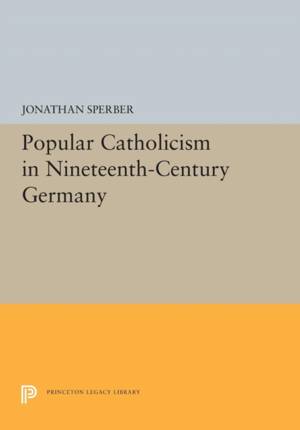
- Afhalen na 1 uur in een winkel met voorraad
- Gratis thuislevering in België vanaf € 30
- Ruim aanbod met 7 miljoen producten
- Afhalen na 1 uur in een winkel met voorraad
- Gratis thuislevering in België vanaf € 30
- Ruim aanbod met 7 miljoen producten
Omschrijving
Focusing on an area roughly equivalent to the contemporary state of North Rhine-Westphalia, this description of popular religious life between 1830 and 1880 revises established postitions of German historiography. It depicts thee increasing laicization of the first half of the nineteenth century, with its mediocre church attendance and secularized morality, and goes on to show how the two decdes after 1850 reversed the trend toward secularization. During the latter period, renewal of the people's loyalty to the church encouraged a developing political Catholicism.
The author demonstrates that urbanization and industrialization may well have strengthened popular piety, rather than weakening it. He considers a variety of political implications of popular religious life, from the revolution of 1848/49 to the Kulturkampf of the 1870s, and see political Catholicism in Germany as asrising not exclusively from church-state confrontations but from the interaction of new religious practices with a changing socioeconomic environment and a counter-revolutionary ideology.
Jonathan Sperber is Assistant Professor of History at the University of Missouri--Columbia.
Specificaties
Betrokkenen
- Auteur(s):
- Uitgeverij:
Inhoud
- Aantal bladzijden:
- 336
- Taal:
- Engels
- Reeks:
- Reeksnummer:
- nr. 5394
Eigenschappen
- Productcode (EAN):
- 9780691655512
- Verschijningsdatum:
- 23/04/2019
- Uitvoering:
- Paperback
- Formaat:
- Trade paperback (VS)
- Afmetingen:
- 178 mm x 254 mm
- Gewicht:
- 585 g

Alleen bij Standaard Boekhandel
Beoordelingen
We publiceren alleen reviews die voldoen aan de voorwaarden voor reviews. Bekijk onze voorwaarden voor reviews.











